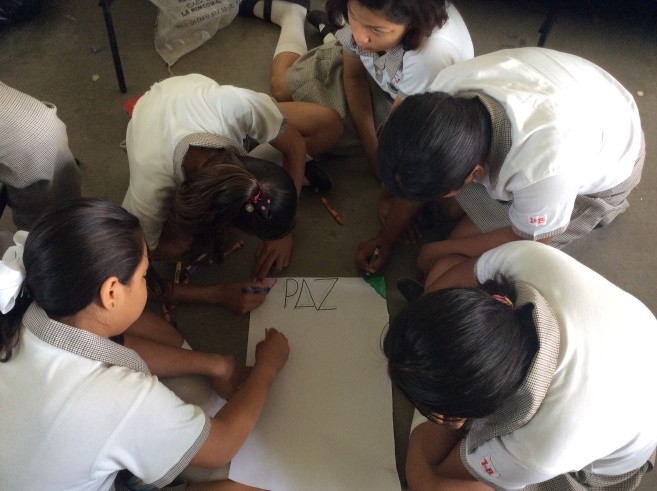
Mexico has experienced an increase in narco-trafficking-related crime and violence in recent years, significantly affecting the country’s security and economic growth, with an especially detrimental effect on opportunities and development for youth. Recent Government of Mexico (GOM) data shows the national murder rate steadily declining (peaking in 2011), which the GOM cites as evidences that its approach to reducing crime and violence is working. Despite the decline, many areas of the country continue to be shaken by violence as traffickers battle to fill the vacuum left by the deterioration of large cartels. Violence and rapid urbanization, particularly in Mexico’s northern border cities, have contributed to increased crime rates and threaten the security and well-being of citizens.
Under USAID/Mexico‘s Country Development Cooperation Strategy, for fiscal years 2014-2018, USAID is dedicating approximately $90 million to advance crime and violence prevention by increasing collaboration between government, business, and civil society in target cities; strengthening government capacity to design and implement crime and violence prevention policies and plans, and increasing the ability of at-risk youth to play a productive role in their communities. Crime and violence prevention is a cornerstone of the Merida Initiative, a U.S.‑Mexico partnership to improve citizen security in Mexico by fighting organized crime and building stronger more resilient communities.
USAID focuses on working with youth who are most at-risk for involvement with the criminal element. Efforts work on encouraging youth to stay in school, strengthening social integration and civic leadership, and offering opportunities to improve life skills and obtain self- or salaried-employment. USAID’s tertiary prevention activities also include support to youth who have been in conflict with the law or are currently serving time in detention centers. USAID’s technical assistance to the GOM is improving government entities’ ability to design, implement, and monitor crime and violence prevention activities at the federal and local levels. Through partnerships encompassing government, private sector and nongovernmental organizations, USAID is supporting a holistic approach to address the drivers of violence and crime within communities. Through these efforts, USAID has assisted the Mexican government’s ability to refine prevention models and strategies and enable partners to scale-up activities that are proven to work.
Key Achievements
• Since 2012, USAID’s crime and violence prevention activities have collectively benefited over 35,000 at-risk youth through after-school and summer activities, leadership and vocational training, psychological support and employment opportunities in Ciudad Juarez, Monterrey and Tijuana.
• In 2015, USAID, in partnership with the GOM, developed an on-line catalogue (”eBook”) with over 20 crime and violence prevention publications that present effective practices that enable GOM officials at the federal, state, and local level, along with CSOs to draw upon successful practices as they design, implement and evaluate prevention-based initiatives throughout Mexico.
• USAID supported the creation of Municipal Crime and Violence Prevention Committees in the cities of Tijuana, Monterey and Ciudad Juarez that bring together key community stakeholders, including representatives from local government, universities and private sector to develop and oversee municipal prevention initiatives. The Committees have been recognized as a best practice by the Federal Government and the model is being replicated in other cities in the country.
• In partnership with the International Youth Foundation, USAID’s prevention efforts reached more than 9,000 at-risk youth in vulnerable communities in Ciudad Juarez and Tijuana who participated in summer camps, after-school activities, and employability programs. Approximately 70% of graduates gained employment, secured an internship, or returned to school within six months of completing the program.








Comment
Make a general inquiry or suggest an improvement.